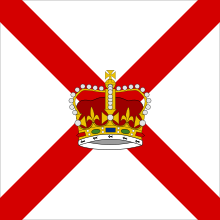This led to the introduction of a series of larger liners ranging from 9,588 GRT to 15,551 GRT on RMSP's Southampton – Buenos Aires route. Each had a name beginning with the letter "A", so collectively they were called the "A-liners" or the "A-series". The first was RMS Aragon in 1905, followed by sister ships Amazon, Araguaya and Avon in 1906, and Asturias in 1908. A few years later the final four "A-liners" were built: Arlanza in 1912, Andes and Alcantara in 1913 and Almanzora in 1915. Earlier members of the series, from Aragon to Asturias, had twin screws, each driven by a four-cylinder quadruple-expansion steam engine. The final four members of the series, from Arlanza to Almanzora, were significantly larger than the earlier five. They had triple screws, with the middle one driven by a low pressure Parsons steam turbine.[12]
After the First World War RMSP faced not only existing foreign competition but a new UK challenger. Lord Vestey's Blue Star Line had joined the South American route and won a large share of the frozen meat trade. Then in 1926–27 Blue Star introduced its new "luxury five" ships Almeda, Andalucia, Arandora, Avelona and Avila to both increase refrigerated cargo capacity and enter the passenger trade. At the same time RMSP introduced a pair of new 22,200 GRT liners, RMS Asturias in 1926 and RMS Alcantara in 1927, which at that stage were the largest motor shipsin the World. Although these were the biggest and most luxurious UK ships on the route, RMSP Chairman Lord Kylsant called Blue Star's quintet "very keen competition".[13]
Reconstitution as Royal Mail Lines[edit]
 | |
| Industry | Shipping, cruise line |
|---|---|
| Predecessor | Royal Mail Steam Packet Company |
| Founded | 1932 |
| Defunct | 1965 |
| Fate | Acquired |
| Successor | Furness, Withy & Co. |
| Headquarters | United Kingdom The company ran into financial trouble, and the UK Government investigated its affairs in 1930, resulting in the Royal Mail Case. In 1931 Lord Kylsant was jailed for 12 months for misrepresenting the state of the company to shareholders.[1] So much of Britain's shipping industry was involved in RMSPC that arrangements were made to guarantee the continuation of ship operations after it was liquidated. Royal Mail Lines Ltd (RML) was created in 1932 and took over the ships of RMSPC and other companies of the former group.[14] The new company was chaired by Lord Essendon.[15] The new company's operations were concentrated on the west coast of South America, the West Indies and Caribbean, and the Pacific coast of North America; the Southampton – Lisbon – Brazil– Uruguay – Argentina route was operated from 1850 to 1980. RML was also a leading cruise shipoperator. RMS's largest ship was the 25,895 GRT turbine steamship RMS Andes. She was designed as an ocean liner but when launched in 1939 was immediately fitted out as a troopship. She finally entered civilian liner service in 1948, was converted to full-time cruising in 1960 and was scrapped in 1971.[16] RMSP and RML lost a number of ships in their long history. One of the last was the 17,547 GRTturbine steamship RMS Magdalena, which was launched in 1948 and grounded and sank off Brazil on her maiden voyage in 1949.[17] In 1965 RML was bought by Furness, Withy & Co.,[1] and rapidly lost its identity. In the 1970s parts of the Furness Withy Group, including RML, were sold on to Hong Kong shipowner CY Tung, and later sold on to former River Plate rival Hamburg Süd; by the 1990s Royal Mail Lines was no more than the name of a Hamburg-Süd refrigerated cargo service from South America to Europe. |
No comments:
Post a Comment